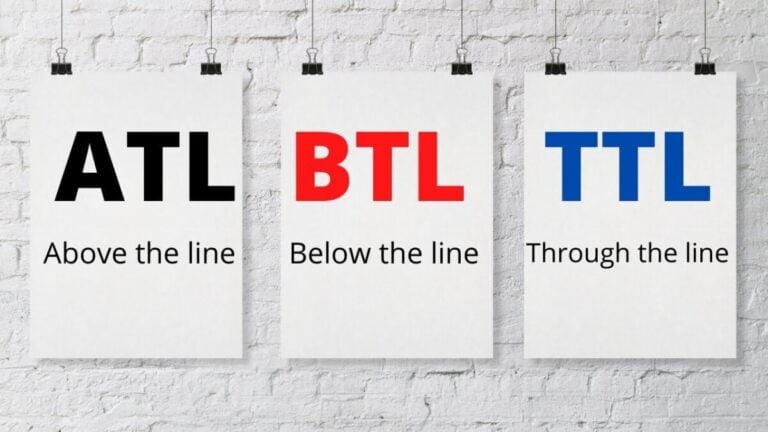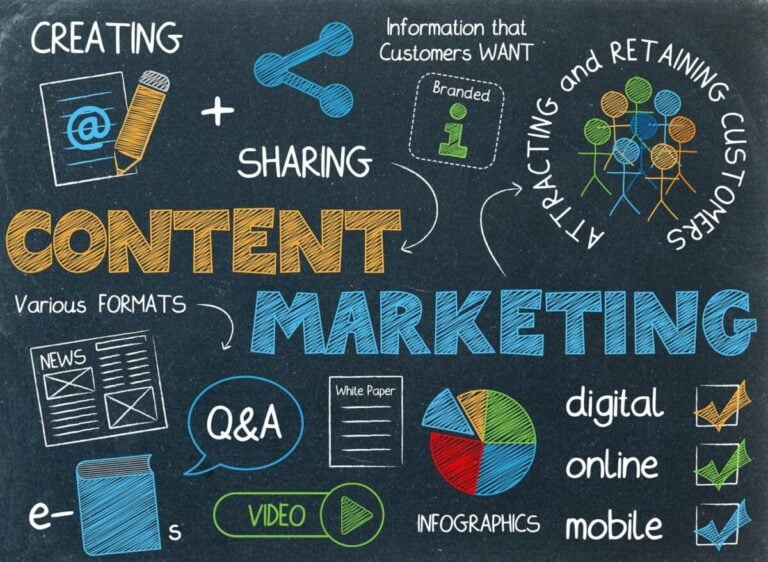Despite the fact that economists and marketers give different definitions of the term, most often their interpretation of the essence of the definition comes down to one thing.
What is marketing?
An enterprise can use various strategies and types of marketing; when organizing the appropriate service in real production conditions, marketing functions are reduced to:
- studying consumer demand, buyer interests and preferences;
- market segmentation, identifying a target group that is predictable will purchase manufactured products;
- assessment of product preferences and requirements formed by the target audience;
- change or adjustment of product properties, development and evaluation (testing) of quality indicators taking into account customer requests;
- studying and analyzing the influence of cost on the purchase of products, developing a strategy for influencing the formation of a “feeling” of the value of the product using price fluctuations;
- selection of intermediaries and distributors in order to ensure availability of goods to wide groups of the population;
- choosing an advertising strategy for manufactured products, necessary so that potential buyers not only know about the existence of the product and its basic consumer characteristics, but also would like to purchase it;
- developing a strategy to expand the target group of consumers, promoting goods to conquer sectors occupied by competitors.
Considering the main activities of marketing as a management system, if an enterprise has a sales department, we can say that its work includes not only marketers, commodity experts, freight forwarders, but also advertisers, salespeople, logistics specialists and other workers.

The possibility of monetizing proposed ideas or products depends on the company’s goals; promoting a product does not necessarily mean making a profit. In some cases, marketing can be understood as the promotion of socially significant ideas, for example, the promotion of smoking cessation.
The types of marketing chosen by the company’s specialists are determined by the goals and objectives that the company is engaged in solving in a given period of time. To choose the right strategy for promoting a product or idea and achieve your goal, marketers must consider:
- The amount of resources spent on implementing the proposal.
- The time during which the goal is expected to be achieved.
- The quality of the result obtained.
Below is a brief description of the types of marketing that differ from each other.
Classification of marketing according to demand
Conversion
The main goal of this type of marketing is to overcome negative perceptions of the product. The reason for the formation of such an “image” of a product may be the actions of competitors or loss of reputation due to a scandal.
Examples of products to which a potential consumer may develop a stable negative attitude are various types of medications and food products. In this case, the task of marketers is to eliminate references to the product in a negative context, create a need to purchase the product (for example, due to the company’s pricing policy that is favorable to the buyer) and increase sales volumes to achieve a match between supply and demand.
Other tools used by specialists include changing the product promotion strategy and rebranding.
Developing
The basis for the emergence of demand in this case is consumer dissatisfaction with the products offered on the market. This type of activity is appropriate if there is an emerging demand for a product and its absence on the shelves, for example, yeast-free bread or products with a reduced content of harmful substances (cholesterol, food additives of group E).
The task of specialists in this case is to determine the presence of potential demand, take measures to create or deliver a product, coordinate the actions of management to transform an emerging need into a realized opportunity (product or service). This type of activity is considered quite aggressive, since it is aimed at expanding sales markets and offering new products, which leads to taking a leading position in the market.
Stimulating
This type of activity is based on the lack of demand in marketing for certain types of goods, due to a neutral attitude towards the product.

The indifferent attitude of consumers towards a product can be explained by the lack (or loss) of the value of the product in the eyes of consumers (or in given conditions), or the unpreparedness of the market to offer the product (service). An example could be the entry of an Internet provider into a market occupied by competitors, in which the initial lack of demand for services can be explained by insufficient awareness of potential customers.
The task of marketers in this case is to draw the attention of potential consumers to their products. In a significant part of cases, this can be facilitated by advertising, lowering prices at the stage of entering the market, holding tastings and promotions to create sustainable interest among customers, and later the need to purchase a product/service.
Supportive
It represents one of the main types of marketing and is used in a situation where the level of demand for a product approximately matches its supply.
When achieving this goal, desired by many entrepreneurs, experts recommend not curtailing efforts to promote the product, since its consumption in the future may be influenced by the emergence of similar products from competitors and changes in the structure of customer needs. Examples of this type of marketing include advertising a well-known product, changing the packaging or shape (volume) of a product.
The main tasks of specialists in this case are to exclude the possibility of setting higher prices for the product compared to competitors and to develop (implement) a service or product that will be in demand in the future.
Demarketing
According to the definition accepted among experts, demarketing is a type of marketing aimed at reducing demand. This type of activity is used when the product is highly popular and the enterprise’s capacity is not able to satisfy the market demand for the product.
Among the tools used by sales specialists are the transfer of rights to produce a product to another enterprise, the cessation of sales promotion for a product, an increase in its price, and the elimination of product advertising from the media space.
At the same time, the company can carry out work aimed at increasing the volume of production of products that have a high level of popularity among customers. A good example of the implementation of a demarketing strategy is the approach to the sales organization of Apple, which ensures consistently high prices for products compared to competing companies.
Counter
In contrast to demarketing, in which targeted work is carried out to reduce the sales volume of a quality product, counteractive marketing is about reducing demand for goods that have negative consumer properties.
Among the tools used for this, the following should be highlighted:
- anti-advertising;
- limitation of production;
- release of social videos that form a negative attitude towards products;
- increase in excise taxes on alcohol and tobacco products;
- introducing a legislative ban (drugs) or restricting the sale of, for example, weapons.
In a significant part of cases, the state is engaged in limiting demand that is irrational from the consumer’s point of view.
Synchromarketing
Among the various types and types of marketing, synchromarketing should be highlighted, used in a situation where the company is generally satisfied with sales volumes, but there is a need to eliminate fluctuations in supply and demand over limited periods of time. Fluctuations may be associated with an increase or decrease in consumption of a product or service in a particular season, weekends.

A good example of the difference between the level of supply and demand for a service is the undercrowding of public transport during the day and congestion during rush hour.
Among the tools that help stabilize and equalize demand, marketers name changing customer motives, achieved through propaganda and advertising, and setting flexible prices that change depending on fluctuations in the need for a product/service. For example, increasing the cost of a ticket on a weekend and reducing the price on weekdays.
Synchromarketing is considered an excellent method that can be used to sell promotional goods or seasonal products, the demand for which can be predicted and sales channels can be prepared for a temporary surge in demand (price increases).
Remarketing
The following type of marketing can be used when demand falls, depending on the stage of the object’s life cycle, changes in market conditions, or during an economic crisis.
One of the main tasks in remarketing is to restore declining demand for a product, which can be achieved by changing the properties of the product while focusing on the changing needs of customers to extend the life cycle of the product, developing new markets, and carrying out a deep modernization of a service or product.
Classification of marketing by nature and scale of activity
This classification of types of marketing is based on differences in the volume of activities and their focus on meeting the demand of certain groups of the population or mass sales.
Mass
One of the most common types of marketing, in which an enterprise produces and sells one product, targeting a wide range of consumers.
The product promotion strategy in this case perceives the market as a single whole, without identifying target segments, and involves the use of a basic approach for standard products. The list of possible actions of sales specialists, in contrast to the activities taken in various types of direct marketing, should include mass advertising carried out through the media, print publications, and the use of billboards.
Targeted (concentrated)
This classification of marketing, depending on the type of product, involves dividing the products into a number of segments that satisfy the needs of various target groups.
This sales strategy is often chosen by manufacturing plants and representatives of small businesses; when entering a new market, they offer different products for different age and gender categories of buyers. It is believed that in a market economy and associated competition, focusing on the needs of each client is the most correct strategy for promoting a product/service.
As an example of an individual approach that takes into account the interests of the client, one can name a kind of diversification of activities in a beauty salon, which, in addition to direct hairstyles, pedicures, manicures, can offer massages, beauty treatments, spa visits, etc.
Differentiated
This is a type of activity of sales specialists aimed at conquering a significant part of one small market segment. Using a strategy that involves narrow specialization, such as producing different types of anchor bolts, allows the company to avoid spreading efforts.

This, in turn, leads to the fact that, provided that a quality product is produced, the company gains credibility with the buyer and occupies its niche in the market. Product-differentiated marketing refers to a type of marketing or targeted type of activity that is well suited to selling goods and services offered by companies with limited resources.
Innovative
Innovative marketing should be included in a separate group. As a special type of innovation activity, it represents the continuous introduction of new developments to improve the efficiency of the company as a whole.
When listing the types of innovative marketing that are divided into, experts recall the operational and strategic varieties. Among the methods used to promote a product within the framework of this concept, a company can use high prices (in the absence or a small number of competitors), low prices (set in the presence of fierce competition), and convincing buyers that a quality product should have a high cost.
Classification of marketing by purpose of exchange
Since the goals of various organizations, recorded in their statutory documents, may differ, experts distinguish between structures aimed at making a profit and organizations acting in the interests of society. According to this classification, there are two types of marketing, the main features and differences between which are described below.
Commercial
Most organizations operate on a financial basis and aim to provide services, manufacture and (or) sell public goods for profit and are classified as commercial enterprises.
By producing food products, household appliances, providing insurance, repair, haircut, sharpening services, producing goods with a long service life, materials and components, as well as industrial goods, these organizations aim to extract maximum profit. To achieve their goals, they can use various types of product promotion in marketing, described in this article.
Nonprofit Marketing
Another part of organizations, as the goals and mission of the company’s activities, proclaims the dissemination of their ideals, beliefs, feelings, faith or services to the general public. Typically, this type of socially responsible marketing is used by organizations that have social significance and provide public benefit, for example, institutions related to healthcare, education, culture, other humanitarian institutions and the social projects they supervise.
The existence of such institutions and their activities are aimed at creating and maintaining a positive opinion among the population about their professional activities, which in turn allows them to apply for increased budget funding. Among such institutions are government agencies providing law enforcement, fire protection, foundations and charitable organizations, churches, children’s welfare organizations, etc.
Classification of marketing by scale of use
The classification, which distinguishes between types of marketing according to the scale of their activity, includes the following:
- Micromarketing, in which the company’s activities involve studying and analyzing markets, developing and implementing a strategy for the production and sale of goods and services produced by one company.
- Megamarketing involves taking into account and coordinating the interests and wishes of public, trade union organizations, clients, and government when promoting the results of activities of large companies.
- Macromarketing is a type of activity aimed at realizing socially important social goals and responsible for their implementation.
Depending on production volumes or designated goals, organizations bear different social burdens.
Classification of marketing by scope
Depending on the area of activity of the enterprise, the following types of marketing are distinguished in the field of services, industry, and in the interaction of the company with the consumer, their characteristics and features are described below.

The consumer type is used in cases where the company’s efforts are aimed at establishing interaction with the client. In this group, marketers distinguish:
- activities aimed at creating a positive image of the product (advertising, promotion);
- activity related to the formation of a product brand (retail sales);
- activities related to the distribution of the product and its delivery along a built vertical from the owner through dealers and distributors to the buyer.
Industrial marketing involves interactions between professional or business organizations that purchase a product and the companies that produce it. In this case, the consumer company can buy the product to satisfy its own needs or subsequent resale of the product for profit.
Services marketing represents a type of service provided in addition to the sale of consumer goods. The differences between them lie in the intangible nature of the activity. Despite this, manufacturing enterprises, in accordance with their obligations, provide warranty, operational, maintenance, post-warranty services and, under special agreements, provide engineering and consulting services.
Modern types of marketing
The development of technology has made its own adjustments to modern types of marketing and the principles of their practical application. It is believed that in our time it is possible to sell and realize not only material products and services provided, but also information, the likelihood of an event occurring, risks, investments in the development of technology and a specific project.
Such opportunities imply the use of new technological approaches, some of which are described below as separate types of product promotion.
Internet marketing
The promotion and sale of goods through global networks is becoming increasingly widespread, given the possibility of easy access to searching for information about the product, the company’s reputation, user reviews and the absence of the need to maintain a staff of distributors.
Among the most common types of positioning in marketing related to advertising, offering or selling goods and services on the Internet, marketers call the following methods of promoting products.
Social Media Marketing (SMM)
SMM involves advertising products through accounts on social networks. Typically, these are offers to purchase a product, such as an anti-wrinkle product, or an advertisement for a service, such as a manicure or food delivery.
As a platform, they can be used as personal accounts of users, from which they receive a percentage as sales increase, publics and groups that post such advertisements, and corporate profiles.
Among the advantages of using this type of marketing, experts name:
- Low cost of advertising content placement.
- Higher level of trust among potential clients, since such ads are not perceived as advertising.
- Availability of feedback from clients.
- Wide coverage of target audience and potential buyers.
However, this method of attracting attention to the product also has a number of disadvantages. Among them, marketers include the need to constantly update information about the product, the lack of guarantees of results, the perception of such content by some people as advertising and the formation of a sharply negative attitude towards it.

When determining what types of trade relate to direct marketing, experts emphasize that this is an interactive type of sales system that allows the client to obtain the necessary information about the product and purchase it through interactive television or the global Internet.
Among the channels through which direct marketing can be implemented, experts name telemarketing, sending offers by mail, using databases and catalogues, mobile commerce, and personal sales.
Content marketing
Content marketing is a strategy for selling a product in which you provide information about the product without asking them to take any action (subscribe, order, buy the product).
In this promotion format, a trusting relationship is built between the seller of the product and its potential buyer, as a result of which the latter can turn off the criticism module, which leads to an increase in the attractiveness of the proposed product. Entertainment, research, news or educational content may be distributed through infographics, social networks, a personal blog or website, email newsletters in the form of games, video reviews and other forms.
Among the advantages of this type of marketing, sales specialists name a high level of product sales, low advertising costs and natural website promotion due to increased views in the presence of useful content.
Among the disadvantages they name is the impossibility of using the method for the sale of all types of goods, the lack of a quick effect, since the strategy envisages long-term development.
E-mail marketing
E-mail marketing is a system of distributing goods using targeted information via SMS or e-mail.
The purpose of this strategy is to inform subscribers about news, ongoing promotions, and the opening of a new point of sale. Among the advantages of using electronic notifications, marketers cite the ability to track results and work with the target audience, that is, sending mail to the addresses of potential buyers.
The disadvantages of mailing are that the client perceives the offer as intrusiveness, a large number of advertisements end up in spam, and a decrease in the effectiveness of the strategy after a certain period of successful application.
Crowd marketing
A marketing strategy that involves the formation of a positive image of a product, achieved by posting reviews of a service or product on social networking sites, websites, blogs, forums and under thematic video materials.
Among the advantages of using technology, experts name:
- increasing customer confidence when frequently exposed to positive reviews about the company;
- product promotion looks as natural as possible, since people tend to share information;
- profit growth;
- formation/maintenance of the manufacturer’s reputation;
- increasing the frequency of transitions by representatives of the target segment via links in posts.
Among the disadvantages of the strategy, marketers cite the long duration, in which the minimum time that must pass before obtaining the first results is at least 3 months.
In addition, this type of information dissemination from the point of view of return is unlikely to suit small stores. Meanwhile, the work of a crowd marketing specialist is very labor-intensive and is paid at a good price.
Offline marketing
This strategy involves distributing information about the product and advertising on such platforms as leaflets, brochures, printed publications, radio, TV, hand-to-hand distribution in the form of business cards, catalogues, flyers, and telemarketing using hotlines.

This advertising reaches the user over a longer period of time, but is more firmly entrenched in the mind. The high frequency of publication of magazines and newspapers does not guarantee that advertising products from the distributor will reach a potential buyer or that he will not miss information that is interesting to him.
Unlike Internet methods, advertising when using offline advertising (outdoor advertising) is broadcast not to the target audience, but to all consumers. In addition, this type of product promotion has a significantly higher cost compared to the use of digital means of communication.
Territorial marketing
The government and municipal authorities can use various types of territorial marketing to convey information about the geographical, economic, tax, and climate benefits of investing in the development of enterprises and infrastructure in the region.
The purpose of this activity is to improve the living conditions of people living in a certain area. The most successful example from this point of view is the holding of so-called image events, for example, the Football Championship, the Boxing Super Cup or the Olympics.
Another way to inform about the advantages of a territory is to produce and post videos online and promote them to attract a flow of tourists for the purpose of recreation or sightseeing.
PR marketing
PR involves activities aimed at improving the company’s image on the Global Network. Such work may include analyzing site visitors, improving it from a visual point of view, posting and updating information about the company’s activities and advertising on similar topics.
Among the advantages of such activity, users cite low cost and a higher level of trust on the part of users compared to open advertising. Considering the high speed and low cost of running a PR campaign on the Internet and disseminating information, the quality of the material may deteriorate and it may lack the content that the customer would like to see there.
Mobile Marketing
It is a type of product promotion using applications, MMS, SMS and messengers advertising messages, for example, announcements about the expiration dates of “super discounts” in the nearest shoe store or the conditions of a promotion in the nearest supermarket.
The disadvantages of this method include that messages are ignored by a certain percentage of users and the ability to send messages, if geopositioned, to customers located close to the point of sale. On the other hand, every year creative employees of companies find more and more effective ways to interact with customers, and it is too early to write off this strategy.
Network Marketing
Various types of network marketing represent a strategy for multi-level sales of goods and services by building a network in which one of the distributors can involve his friends in the sale of goods.
Some companies, for example Avon, Amway, Mary Kay, Faberlic, distribute their products using the principles of network marketing. The income of each of the distributors working for the company consists of commissions for the sale of each unit of product and bonuses for attracting participants and their work.
Among the advantages of this method, marketers cite the opportunity to confidentially explain the merits of the product and make money on sales. The disadvantage is the excessive intrusiveness of sellers, whose income depends on the volume of products sold and the high cost of products.
Event marketing or Performance marketing
Creative marketing based on promoting a product in connection with some event. For example, distributing souvenirs with company symbols will remind the buyer of the opportunity to visit the advertised store or establishment.

Among such events, one can highlight the involvement of animators for the opening of a store, holding an exhibition or tasting on a city day, etc. The main principle of this increasingly popular strategy is to evoke emotions in potential buyers, when they appear, it becomes possible to attract attention to the product being offered. One of the features of this type of marketing is the need for systematic events to present the services or goods offered.
The advantages of sales promotion activities of this type include establishing the most effective contact with a potential buyer.
Trade marketing
Experts identify the so-called integrated marketing as a separate group, which is an effective combination of product quality, affordability, customer loyalty, organization of sales in large volumes and continuous promotion of products on the market. This interaction makes it possible to obtain a synergistic effect provided that the appropriate chain is built.
Cross marketing
A cross-type activity aimed at sales management provides that consumers of products manufactured by one company become buyers of products sold by another company that is not in the same market niche.
With this interaction scheme, one party benefits in the form of increased brand awareness, while others benefit from an increase in the customer base. The interaction of several companies has advantages, which experts include expanding the range of products, reducing advertising costs while increasing opportunities to promote their own brand, and improving the reputation of participating companies.
Partisan
The use of guerrilla marketing involves the use of unusual methods of promotion, creativity and ingenuity.
Such approaches make it possible to ensure effective promotion of a product or service at minimal cost. And if the previous type involves coordinated action in a team, then hidden marketing almost always belongs to the sphere of individual creativity. An example of this approach could be a non-standard design of a premises for sale, the use of a fictitious but easily recognizable company logo, etc.
Viral marketing
This type of Internet marketing got its name for the high speed of distribution of advertising products when embedding ads into online applications, text files, games, videos and photographs.
Such advertising should “infect” the buyer with a certain idea and create a desire to share the found content with other users. In addition to the entertainment function, this type of activity to promote the product reminds of it and informs about its quality characteristics and conditions of purchase.
Among the advantages of using this technology, experts cite attracting and retaining the client’s attention, minimal cost and unobtrusiveness of the ad.
Among the disadvantages, one should highlight the need to generate a creative original idea, packaged in graphic forms and the lack of guarantees that the idea will be liked by potential buyers.
Video marketing
This type of activity represents a set of activities for the promotion and sale of goods and services using video materials.

The purpose of this activity is to clearly inform the buyer about the advantages and features of the offered service. The advantages of the technology include the use of video format, increased conversion by presenting the product in a visual form, the ability to use any products and services for advertising, and an increase in the number of buyers with minimal investment.
Among the negative aspects of the strategy, one should highlight the frequent ignoring of such user content and the presence of difficulties in effectively reaching the target audience.
Booze Marketing
This type of product promotion is based on word of mouth, that is, the transfer of information about a product from person to person. According to the principle of dissemination, this variety resembles a viral-type strategy, however, in addition to confidential communication, this type of activity also has disadvantages, one of which is the dissemination of inaccurate information.
Expomarketing
It is a way of organizing sales and increasing profits, based on attracting potential customers to spectacular product presentations, fairs or exhibitions. This method of working with consumers is good because it establishes direct contact and allows them to independently familiarize themselves with the product/service offered.
Lateral marketing
A non-standard strategy created in contrast to vertical marketing, which involves identifying target segments and positioning the target audience.
Such activities involve the generation of new ideas, the development of new products, going beyond the limits designated by familiar markets. Among the advantages of using this approach is the possibility of creating a qualitatively new type of a well-known product; the disadvantage is the possibility of complete failure of the development.
Interconnected Marketing
It is a special type of coordinated interaction established between representatives of the marketing department and all departments of the organization, personnel involved in the manufacture of products, and the business community.
The organization’s work as a single, well-coordinated mechanism allows us to establish cooperation with sales offices, distributors and customers. The advantage is to stimulate the development of team spirit, the ability to convey to employees and awareness by each of them of the goals and mission of the organization.
Integrated Marketing
The goal of firms using this strategy is to subordinate the activities of all structural divisions of the organization to meeting customer needs.
The practical implementation of this technology involves visits by the manufacturer’s sales agents, an in-depth study of customer reactions to the product and changes in the properties of the product to form a sustainable positive attitude towards it. Coordination of the work of all departments ensures the release of products with the best characteristics, which increases demand, and therefore the income of the organization.
Depending on the direction of commercial activity, marketers distinguish tourism, financial, banking types of marketing, as well as promotion of goods and services in the field of housing construction and real estate, agriculture (agricultural marketing) and other areas.


















